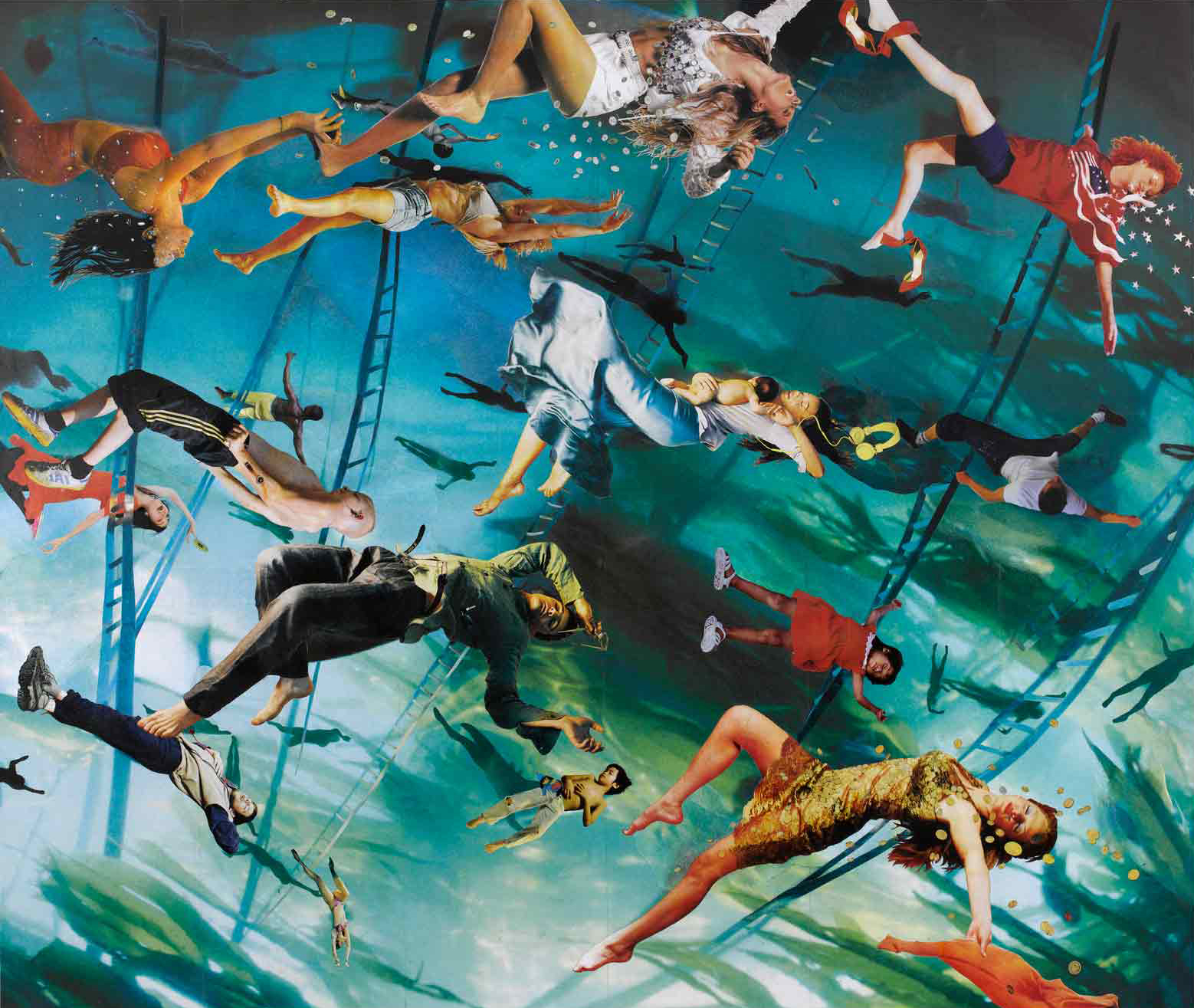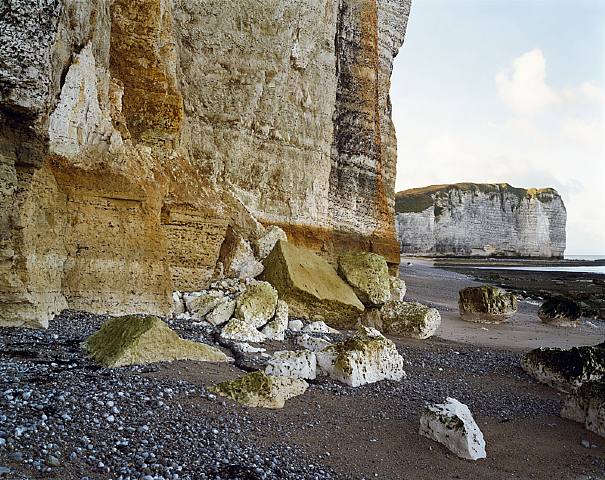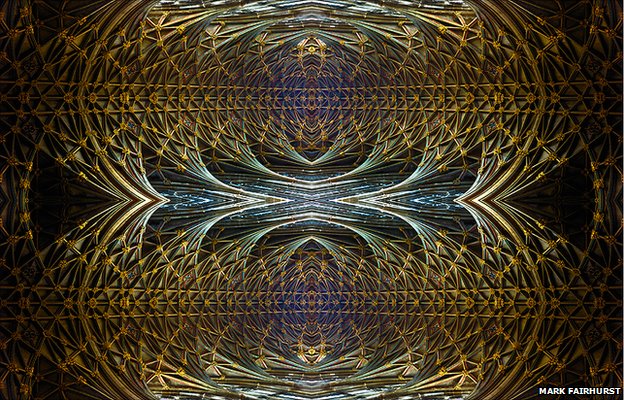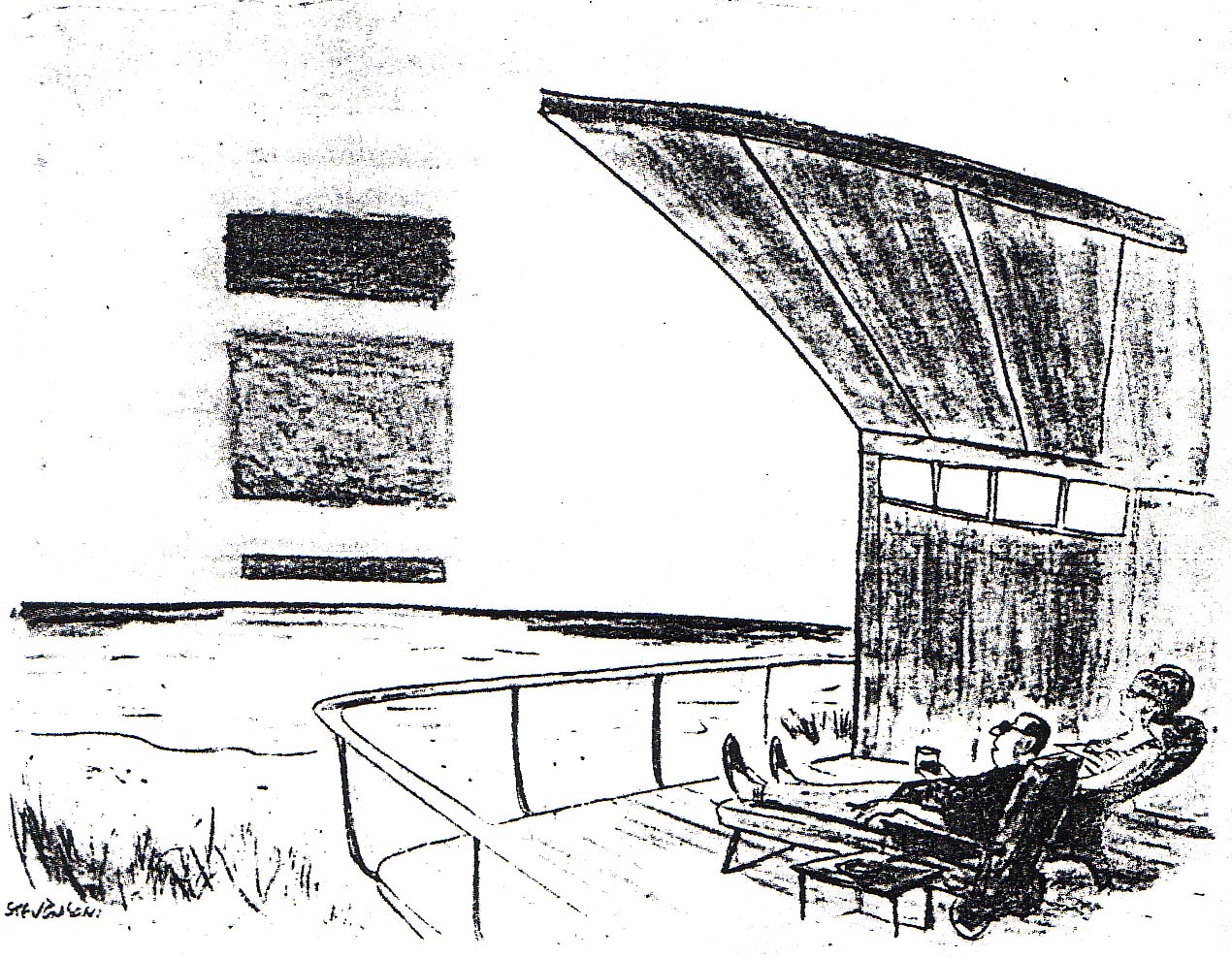We all know that the image-saturated world we live in is invested with meaning – if seeing is believing, there’s a lot of faith circulating in 21st century culture, from high art to popular screen culture. But this believing is in a very obvious sense ‘religious-free’ – it’s not about the doctrine or creed of an explicit theology, but more about authentic experience and the perception of truth (small ‘t’). Spirituality is a good word for talking about it. This image is a focus for some of my ideas about the spiritual in art – David Mach’s ‘Jacob’s Ladder’ was part of his solo show in Edinburgh that I reviewed in October.
Spirituality here is found to be exaggerated in a dream state – Mach’s figures are not just sleeping, they are transported to an other-worldly state, they have a lack of grounding against the watery background. Jacob’s dream opens the door to a vertical dimension where encountering God means seeing his transcendence, and awe-inspiring ‘otherness’. The ladder or stairway becomes symbolic of the elements of religion that are about distance, the separation of man and God, of nature and the super-natural.
Art’s purpose has often been to point this out, even to volunteer itself as a medium for realizing (but not closing) this distance. So we have the long history of art that, by being self-effacing, ascribes to a morally superior mode of instruction in things religious. But the big story of modern art is that self-effacing can, ironically, only be an illusion, a pretence that covers up art’s limits and very specific materiality. The myth of this transcendent aspect of art is a bit like being showered with coins from above, and not waking up to their solid, even base, reality.
Three women in Mach’s image lie in a flurry of coins or diamonds, and a fourth in the stars peeling from the American flag on her shirt. It evokes Titian’s ‘Danaë with Eros’ (first of 5 of the same subject, 1544-46), where Zeus appears to Danae in the form of a shower of gold and seduces her. The women in Mach’s image are similarly posed – as if the transportative experience of the dream, or as I’m talking about, the spiritual in art, is ultimately about seduction and ecstasy.
The seduction is important, since the transcendent in art proved difficult to eliminate with modernism – even through the reclaiming of art for art’s sake, a greater holiness if you like, was found in the end of the image. From Kandinsky to Reinhardt, ever increasing abstraction only led to a greater sense of the mystical and the divine, increasingly removed from reality.
A rebuttal to this nihilism comes in the form of immanence, where the God who reveals himself to Jacob promises to be with him, to bless him with descendents and land. In the biblical text, the dream moves from a visionary state to an auditory promise. The Word permits a multiplication of signifiers in a horizontal plane – Jacob’s life expands with God’s presence. I take this to be the effect of the multiple figures and multiple ladders in Mach’s picture – the encounter ends up being a shared experience, and spirituality in art is peopled with others, with the everyday, with heterogeneity.
Magritte’s ‘Golconda’ (1953) exemplifies this – the wondrousness of an other-worldly encounter is still there, but by the expression of ordinary-ness taken to literally new heights. That which is mythical and transcendent is diminished to a discrete reference by the title (Golconde refers to a ruined city in India, famous for its legendary wealth) – Magritte of course being well-known for the subversive questions he brings to textual referencing.
Surrealism, of which he was part, opened the door on that which was repressed in modernism – the multiplicity of human desire, a fracturing of ideals, and the relocation of spiritual experience within the body. It’s the beginning of the post-modern story, where mystery in art is erased through the embracing of popular culture, and the linguistic appropriation of signs, from Pop Art to Brit Art.
What happens next is the big question. Does a plethora of verbal association in images allow for the spiritual in art, or is it forever to be coded in a sea of relative forms? Are Mach’s figures drowning or floating? Does the subjective state of dreaming remain locked in to the personal and individual, as suggested by the headphones and stethoscope of three of the figures? Not to mention the closed eyes.
In the Genesis account, Jacob wakes up and has an overwhelming experience of awe and humility. His life is completely reoriented on account of image and word effecting a reaction towards God. He also acts towards the material (by erecting the stone), which embodies the being-here and becoming-here of the divine. What might it mean if artists ‘wake up’ in the same way – wake up from the dream of ultimate transcendence and the dream of ultimate immanence in art? Is there the possibility of working towards God, and seeing the spiritual in the material? How can that not become just another ideal, even idolatry?
That’s what I want to explore, with my own work, some other contemporary artists (Viola, Hirst, etc.) and through the ideas of some theologians (Pattison, Begbie, etc).
Header image: Jacob’s Ladder, 2011, by David Mach




Pingback: Snakes & Ladders 2: Biblical Reference and Artistic Renditions | DAILY DOSE OF ART